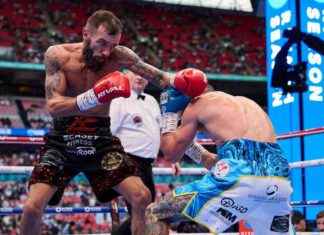On Sunday night, PricewaterhouseCoopers, the accounting firm that handles Oscars voting, was thrust into the spotlight immediately after the wrong name was read as the most effective picture winner at the Academy Awards.
Shortly afterward, PwC announced that the envelope given to presenters Warren Beatty and Faye Dunaway was incorrect, which led to the embarrassing blunder.
Even though Dunaway announced that “La La Land” won the night’s most significant honor, the statuette actually went to “Moonlight.”
“We sincerely apologize to ‘Moonlight,’ ‘La La Land,’ Warren Beatty, Faye Dunaway, and Oscar viewers for the error that was produced during the award announcement for greatest image,” according to a statement from PWC. “The presenters had mistakenly been given the wrong category envelope and when found, was immediately corrected. We are presently investigating how this could have occurred and deeply regret that this occurred. We appreciate the grace with which the nominees, the Academy, ABC and [host] Jimmy Kimmel handled the predicament.”
For the previous 83 years, PricewaterhouseCoopers has been responsible for tallying the votes. Like years just before, partners Martha Ruiz and Brian Cullinan headed up the operation.
The two opened up to ABC News in 2016 about how the method functions, which could give some insight into what went incorrect Sunday.
1. Voting started early: After the nominations are announced, ballots are sent out to members of the Academy, every of whom decided ahead of time regardless of whether to vote electronically or with a paper ballot. Immediately afterward, according to Ruiz, a small group of PricewaterhouseCoopers employees counts every single vote by hand at a secret place.
2. The voting approach is an organized 1: Although electronic voting was introduced 5 years ago, quite a few members nevertheless pick out to use paper ballots.
“We bring these to postal service and drop them off. They then go to the person voters who full the ballots, put them in an envelope that is indicated with safety codes and those come back to us,” Cullinan stated.
“We then have these in an undisclosed location. We do not inform people where the voting takes spot or where the tabulation requires place. And we have a team that assists us go by way of this, but each and every of our group members are only carrying out a portion of the total counting and myself and my fellow partner Martha are the only two who genuinely know the winners.”
three. There’s protection from counterfeit ballots: PricewaterhouseCoopers tends to make sure that each and every ballot returned to them is genuine by matching the code on it to the corresponding voting member. And while Cullinan said at the time that he’d never seen a fake ballot mailed in, he assured ABC News that it would be caught really swiftly and would not be counted.
4. Counting the votes requires days: For days ahead of 2016’s show, Cullinan and Ruiz holed up with their team counting ballots — and that procedure continued for the rest of the week.
“We have a safe. We have many rooms with security and biometric locks and all sorts of points. Alarms that if doors are open for too extended the LAPD shows up. A lot of these security measures that we have in location just to make sure that’s its always secure,” Cullinan stated. Ruiz added that once the ballots are counted, they are filed away for a couple of years and then shredded.
5. Counting the very best picture race is complex: The approach of counting votes for greatest image isn’t as straightforward as 1 may possibly consider. According to Cullinan, each voter is asked to rank the nominated films, with one being their leading option. Right after determining which film garnered the least quantity of votes, PwC personnel take that title out of contention and look to see which film every single of those voters chosen as their second favourite. That redistribution method continues until there are only two films remaining. The 1 with the greatest pile wins. “It does not necessarily mean that who has the most quantity a single votes from the beginning is ensured they win,” he added. “It is not necessarily the case, because going through this method of preferential voting, it could be that the one particular who began in the lead, doesn’t finish in the lead.”
6. Every single winner’s name is printed out to ensure security: Marc Friedland, creative director of Marc Friedland Couture Communications, has been handcrafting the Oscar envelopes and winners cards for six years, even though he did not do them for the 2017 telecast. He mentioned in 2016 that the process took 110 hours, as he made 3 sets of winners cards — a single for each nominee — and 72 envelopes. When he was finished, he gave the winners cards and the envelopes to Ruiz and Cullinan, who have been responsible for putting the right winners cards into the envelopes and sealing them. Then, they loaded them into briefcases and destroyed the cards bearing the names of those who did not win. Winners also obtain a copy of the envelope and the card bearing his/her name. “This is not a thing that is gonna get thrown aside,” Friedland stated of his envelope and card. “This is coveted.”
7. Safety precautions are taken till the end: Ruiz and Cullinan every take a briefcase filled with winners’ envelopes to the ceremony, but to assure maximum security, every travels on a different route and is protected by police. “No matter what happens, at least one particular of us will get there,” Cullinan said. Once they’re at the Dolby, the briefcase stays in their hands. “We stand backstage and we hand the envelope to the presenters just before they stroll on stage,” he added. “It doesn’t really leave my side and I have my LAPD escort with me backstage.”
Our editors found this article on this site using Google and regenerated it for our readers.





